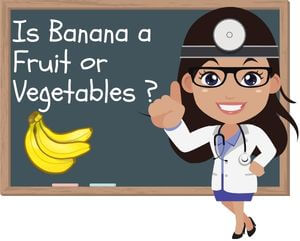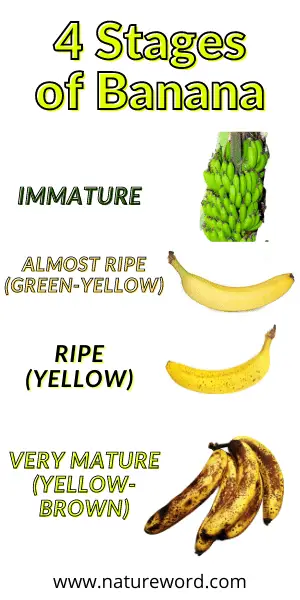Perhaps you have already asked yourself whether bananas are fruit or vegetables. This question is not that easy to answer because not all bananas are the same.
The banana, scientifically called Musa, originally came from Southeast Asia and began its triumphal march around the globe. It is also one of the well-known types of fruit in Germany. Or is it more about the vegetables?

The combination of minerals in the banana, particularly magnesium, potassium, and phosphorus, transforms it into a nerve meal that can help with stress symptoms, including uneasiness and sleep disturbances.
Is Banana A Fruit Or Vegetables? A banana is an edible fruit produced by various flowering plants belonging to Musa’s genus. Most people can quickly tell fruit and vegetables apart. However, the difference between different types of fruit is less clear, and you may be wondering precisely how a banana should be classified. On the other hand, bananas and other fruits that fall under the berry classification rarely contain “berry” in their name and are not generally considered berries.
The confusion began when people began calling certain fruits “berries” thousands of years before botanists came up with precise classification of the different types of fruit. Although this classification now exists, most people remain unaware of it. This is also why the word “fruit” is used to describe most fruits, including bananas, instead of the name of the sub-category they fall into.
So When Is Something Fruit And When Is It Vegetable?
There are several ways to differentiate between fruits and vegetables. For example, you could say: fruit is sweet, and vegetables are hearty. Or: fruits are eaten raw and vegetables only cooked. But that’s not always the case: Paprika, cucumber, or carrots, for example, also taste raw, a baked apple is eaten warm in winter, and can bake sweet cakes from zucchini and carrots.
Fruits are the fruits and seeds of perennial shrubs and trees, for example, an apple on an apple tree. There they develop from a pollinated flower. Yearly means that the plants keep growing after they have been set. Every spring, they bloom and form new fruits and seeds. This arises repeatedly every year and can repeat itself for many years. There are apple trees that are almost a hundred years old.
You Might be Interested : Which Is Healthier: Bananas or Apples?
Vegetables are plants where other parts such as roots or leaves can be eaten. And: you can usually not harvest them for that long. Once a vegetable has been planted, it usually dies after two years at the latest. That is why you have to grow tomato plants in the garden or on the balcony every year to harvest tomatoes for one summer. But there are exceptions here too: asparagus, for example. It can be harvested for eight to ten years after being planted.
But this distinction does not apply to all plant species either. In the meantime, there is also the classification of “fruit vegetables.” These plants have the properties of both vegetables and fruits—the pumpkin z. B. is an annual plant (i.e., more of a vegetable), and at the same time, it is the fruit of a pollinated flower (i.e., more of a fruit). Just fruit vegetables.
Why Is The Banana Crooked?
The banana grows on a perennial. Like every plant, it is oriented towards the sun. On the yearly, there are wreath-shaped flowers – on the so-called “tuft” – small flowers. A single banana will grow from each of these blossoms.
Due to the weight of the fruit cluster, the whole structure grows towards the ground. However, the fruits will eventually align themselves to the sun again to get most of the light. The more the bananas grow, the more they “curve” in the direction of the light source. Because of this, the bananas end up having their crooked shape.
Can You Still Eat Brown Bananas?
Brown spots on the bananas are a typical sign of ripeness. The starch of the fruit has been converted into sugar, which makes the bananas taste sweeter and more aromatic. Ripe bananas can therefore provide the body with energy quickly and are particularly easy to digest.
If bananas have some brown spots on the skin or inside, they are still edible. The areas can easily be cut away. Alternatively, very ripe bananas can also make great smoothies or homemade banana ice cream.
If you don’t want to eat bananas straight away but want to prepare something with them, you can sprinkle them with lemon or lime juice to avoid discoloration in the air.
Do Ripe Bananas Have More Calories?
Is it sweet like sugar equals more calories? The banana bread only becomes delicious when the peel of the bananas is brown. If they are overripe, they contain the most sugar. So when they are in the last stage. Experts for the evil things distinguish between 4 levels of maturity. The other four are here in chronological order:
- Immature (green)
- Almost ripe (green-yellow)
- Ripe (yellow)
- Very mature (yellow-brown)

As qualified nutritionist Uwe Knop explains in an interview with Fitbook, ripe bananas have more sugar than less ripe fruits. “The long-chain carbohydrates contained in it turn into short-chain sugars during ripening, which tastes sweeter.” Nevertheless: Panic is not the order of the day. More sugar doesn’t automatically mean more calories.
Are You Eating Banana Peel: Healthy Or Toxic?
In general, the banana is healthy – and whole. “Eating banana peel” sounds weird, but it isn’t. The shell is rich in nutrients that are good for your heart, immune, and nervous systems.
Banana peels contain many vitamins, including vitamin C, vitamin B6, vitamin K, and folic acid. The banana peel even contains vitamin B12. This is particularly interesting for vegans, as it is otherwise almost only found in foods of animal origin.
In addition, the minerals potassium, magnesium, and phosphorus are found in the banana itself and its peel. In addition, eating banana peel aids your digestion and keeps you full for a long time, as the peel is high in fiber. The consumption of banana peel is only recommended for organic bananas. Wash the bowl thoroughly before you eat it.
Conventionally grown bananas are sprayed and often have plant protection agents such as pesticides or fungicides – especially in the peel. Such banana peel is poisonous, and you should not eat it.
Note: It is advisable to wash your hands after peeling.
There is a myth that more pollutants collect in the tips or ends of bananas. Whether this is true has yet to be scientifically investigated. If you buy organic bananas, you are probably on the safe side.
Can You Eat A Green (Unripe) Banana?
Green or yellow: bananas are healthy and easily digestible. The color of the banana peel only provides information about the degree of ripeness and the sugar content of the crooked fruit.
Bananas ripen continuously after harvest. Therefore, the green bananas that we can buy in our supermarkets will also turn yellow at some point. However, during this ripening process, the color changes and the taste and composition.
Green bananas contain a relatively high amount of starch, filling and ensuring constant blood sugar levels. During the ripening process, the starch is broken down into simple sugars. This means that yellow bananas taste sweeter than green ones. Nothing changes in the calorie content.
The degree of ripeness can be easily influenced at home: Bananas stored in the refrigerator ripen much more slowly. Even if the peel turns brown in the process, they are still edible. Bananas ripen remarkably quickly in the fruit bowl next to apples or tomatoes. They give off the ripening gas ethylene.
Our fruit bananas are not confused with plantains: green and inedible raw. They are boiled, fried, or deep-fried and are a delicacy in many countries. For more information read : Are Unripe Bananas Bad for You?
Final Thought
Berries are a sub-category of fruit, a flowering plant’s sweet, fleshy, seed-containing structures. Bananas are developed from a flower with a single ovary and soft skin, a fleshy center, and tiny seeds. As such, they meet all the botanical requirements of a berry and can be considered both a fruit and a berry.
- From a biological point of view, the banana belongs to the berries. In the first impulse, one would like to think that they belong to the fruit without a doubt. But pumpkins, cucumbers, and tomatoes are also among the berries, called vegetables.
- As a rule of thumb, plants that can be harvested for several years count as fruit. So, for example, fruit trees or berry bushes. Vegetables are plants that are only harvested once a year. However, there are outliers here, too, such as the melon, often counted as a fruit, or asparagus, a vegetable.
- From a botanical point of view, fruits that have emerged from a fertilized flower are fruit. Accordingly, cucumbers, tomatoes, and pumpkins also count as fruit. On the other hand, vegetables refer to parts of the plant, such as roots or stems. The fruit of the banana grows from inflorescences.
